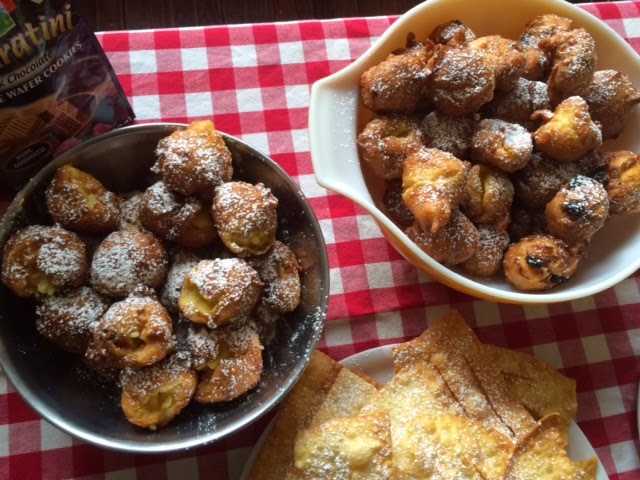My oldest son, MiniBee, turned four (!) a couple of weeks ago, an event that was celebrated with friends and with a deluge of Venice Carnival sweets and a two-batch Pandecocco coconut cake. A couple of days later, we also had a smaller family celebration that required yet another birthday cake. As any parent knows, children are only slightly more traditionalistic than the most conservative old-Europe grandparent, so there was no way MiniBee could hear the words "happy birthday" without blowing on proper candles on a proper cake. I needed a recipe, and I remembered one for Chocolate Matcha Bundt Cake from Bakerella (of the infamous cake pops) that had been sitting patiently on my Evernote for at least three years. I love matcha and I enjoyed it in many versions on my 2009 food pilgrimage to Japan, and I especially love how it couples lusciously with chocolate. It all started when a friend gave me an assortment of fancy chocolates that contained a matcha-chocolate combination that was one of the highlights of my life as an eater.
Now, someone could argue that matcha is a risky choice for a preschooler's birthday cake, and I can definitely tell you that when MiniBee heard his birthday cake was made with TEA, he was not at all pleased. But, in rebuttal to any concerns and objections I have two points to make:
1. Children will eat any cake that's placed in front of them, especially when decorated with birthday candles.
The second point is actually a corollary of my favorite parenting rule:
Substitute "wear" with "eat" and "oxygen mask" with "damn cake" and you'll see what I mean.
But back to matcha. For the cake, I used some unsweetened matcha powder I bought at HMart. And since the party was attended only by five people, I decided against the Bundt format and made a simple layer cake instead, halving the ingredients and making a couple of variations (more egg, less sugar, and my trusted addition of plain yogurt to guarantee a moist texture). I also suspect the matcha-chocolate combination works best in a slimmer cake. What can I say? I think it's classier this way. And as someone who wears German slippers all year round and whose every food contains 15% dog hair, let me tell you: I KNOW CLASS.
The final matcha chocolate cake was delicious, sweet and grassy and elegant (disclaimer: see my standards above), and perfect to be enjoyed with or without children.
Oh, if you wonder about MiniBee: He had two slices and was happy as a clam. And so was I.
MATCHA CHOCOLATE CAKE
Chocolate Mixture
3/4 cups all-purpose flour
1/4 cup baking cocoa powder
3/4 tsp baking powder
1/4 tsp salt
Matcha Mixture
3/4 cups all-purpose flour
1 1/2 tbsp unsweetened matcha
3/4 tsp baking powder
1/4 tsp salt
Wet Ingredients
1 C sugar
1 stick unsalted butter at room temperature
2 eggs
3/4 C milk
1/2 C yogurt
1/2 tsp vanilla
Directions
- Preheat oven to 325 degrees.
- Grease and flour a 9'' springform pan. You can also line it with parchment paper if you prefer.
- In a small bowl, whisk together the ingredients for the chocolate mixture.
- In another small bowl, whisk together the ingredients for the matcha mixture.
- In yet another bowl, cream the butter and sugar with an electric mixer, then add the rest of the wet ingredients.
- Divide the wet ingredients evenly between the two flour mixtures, stirring until combined.
- Pour the two mixtures into the pan. Bakerella suggests doing this in tablespoons to maintain the two colors vibrant. I poured half mixture at a time and then swirled them with my finger.
- Bake for 45–50 minutes, or until a toothpick inserted in the center comes out clean.
- Let rest of 10 minutes and dust with cocoa powder and powdered sugar.






